Audi’s A8 has always been the smart, quiet kid at the back of the luxury executive car class. But that’s OK, because subtlety has always been one of its biggest selling points – this is, in other words, the luxury car for those who don’t want others to know they drive a luxury car. But the A8’s other major USP has always been technology – and in an attempt to stay one step ahead of rivals like the new Mercedes S-Class, Audi’s given the A8 a mid-life facelift and poured on another layer of technical wizardry. We’ve driven it to find out whether it’s been successful.
Engines
Audi has revised and refreshed four of the seven engines in the range line-up. The supercharged 3.0-litre TFSI V6 petrol engine gets a 20PS boost to 310PS, while the twin-turbocharged 4.0-litre TFSI V8 petrol gets 15PS more, giving it 435PS. Meanwhile, the two diesels in the range also get power hikes; the 3.0-litre TDI sees a modest 8PS jump to 258PS, while the 4.2-litre TDI gets a more meaty jump of 35PS to 385PS. The latter engine also gets a whopping 850Nm torque – 50Nm more than before.
The other three engines remain the same, so the range is still topped with two halo models: the luxurious naturally-aspirated 6.3-litre W12 petrol with 500PS, and the storming S8, which retains an uprated, 520PS version of the 4.0-litre TFSI twin-turbo petrol V8. Also still available is the A8 hybrid, equipped with a 2.0-litre TFSI four-pot and an electric motor to give a total output of 245PS.
All of the A8’s engines now meet the new Euro 6 emissions standards, and the most economical 3.0-litre TDI is capable of 5.9l/100km and CO2 emissions of just 155g/km.
As before, Audi’s petrol-powered V8s feature cylinder-on-demand technology, which shuts off four cylinders under low loads; this technology is now featured on the W12 model, too. The W12, along with the 4.0-litre TFSI and hybrid versions, also feature the clever Active Noise Cancellation system, which transmits anti-phase frequencies through the stereo system to cancel out engine noise, and an effective job it does too.
Gearbox & Drivetrain
Audi’s dropped the bottom-end two-wheel-drive version of the A8, meaning all models in the range now offer four-wheel-drive of some description. In the hybrid model, the petrol engine powers the front wheels while the electric motor works on the rears – so when the latter’s not engaged, the car’s a front-driver only. The rest of the range, though, uses Audi’s more conventional Quattro permanent system, with a 40:60 front-to-rear split via a self-locking centre differential. The 4.2TDI and S8 models also get Audi’s sport differential system, which uses two superposition gears to vary the distribution of the power between the wheels.
All A8 and S8 models are equipped with the Audi 8-speed Tiptronic gearbox – which is essentially Audi’s name for the ZF 8HP transmission. That’s no bad thing, as the ZF gearbox is a superb thing, widely admired throughout the industry and used on the vast majority of torque converter autos on sale today.
Suspension & Chassis
All A8 models come with Audi’s adaptive air suspension, with a firmer setup fitted as standard to the 4.2 TDI and S8 models, and available as an option on every other model. All models also get the drive select system, which controls settings not just for the suspension, but also for the electromechanical power steering, the engine control unit, the air conditioning, and even the pre-sense safety system – which can detect an imminent collision and take a number of measures, including tightening up seatbelts and closing any open windows, to protect the car’s occupants.
There are five options available: automatic, which is pretty self explanatory, and loweres the body 20mm when the car drives over 120km/h for more than 30 seconds; comfort, which maintains a softer, smoother setup; dynamic, which stiffens the suspension, tightens up steering and gearshifts, and lowers the body by 10mm (and then a further 10mm once you go over 120km/h); efficiency, which enables the gearbox to change up early and reduces fuel consumption as far as possible; and individual, which allows the driver to tailor each setting to his or her own particular preferences. The only exception is the A8 Hybrid, which loses the efficiency setting, presumably because it’s rigged to run in full fuel-saving mode by default.
Design
As we said at the start, the A8’s biggest USP has always been its subtlety – and so the case remains with the new model.
The most noticeable changes are, in fact, the LED headlights, on models which are so equipped; the multiple sections give the front end a faintly arachnoid look, which might be up your street, or not. Other than that, the A8’s styling is broadly similar to the outgoing car’s – sure, there have been a few subtle tweaks around the car, including updated bumpers and taillights and a splash more chrome around the hind quarters, but for the most part, it’s business as usual.
As you’d expect from an A8, the body is mostly constructed from aluminium (the exception being hot-formed steel sections around the B-pillar), and underpinned by the Audi Space Frame, which is designed to reduce weight while adding stiffness.
Interior
It’s often said that an Audi’s interior is its strongest suit, and that’s certainly true of the A8. Our test cars were all fitted with a number of interior options, such as extended or full leather and comfort seat packages, but even without these boxes ticked, the plastics are first-rate. What’s more, build quality is top notch. Prod various parts of the dash and door panels, and you’ll find everything feels solid and well-secured, while touch points like indicator stalks, buttons and rotary controllers all feel slick and well-damped.
For the facelifted car, Audi’s expanded the range of interior trims and colour schemes available. There are now eight different inlays – five of which are new – as well as four brand new colour schemes out of a total of 10. The A8 is also available with three ‘design selections’ – that is to say, complete suites of leather colours, inlays and accents designed to complement each other – two of which are new. The most successful addition to the range has to be the new selection of satin-finish open-grain wood inlays, which lend the interior a truly contemporary feel – though we’d avoid the pearl grey option, which is a little too ‘’80s hi-fi cabinet’ for our taste.
Audi’s also added a new type of leather to the options list. Called ‘Unicum’, it’s tanned using only natural herb and plant extracts, and isn’t sealed, which Audi says makes it feel even more luxuriant. With a water-repellent coating, however, it’s as easy to clean as normal leather. And of course, there are a host of other options available to make the interior of the A8 feel even more opulent, as you might expect from a car at this end of the market, including seats that can heat, cool and massage you, four-zone climate control, a panoramic glass sunroof, an air freshening ioniser, and even a rear-seat-mounted cool box and mini-bar, to name just a few.
Driving Experience
Out on the road, the new A8 is a very competent luxury car, though that comes with a big proviso. A range of wheel choices is available on every model, and while the larger sizes might look better, we’d strongly recommend foregoing their cosmetic appeal for the improved ride quality of the smaller 18” or 19” options. The latter, we’d say, offers the best compromise of looks and comfort; any larger, and the slimmer sidewalls start to transmit crashy vibrations through to the interior that the air suspension simply isn’t fast enough to deal with.
In fact, the A8 as a whole is one of those cars that seems to make more sense the lower down the range you get. The entry-level 3.0-litre TDI model is expected to be the best-seller, and you can see why. Drive it, and you find yourself asking why you’d pick anything more. The engine might only have had an 8PS boost, but it’s now capable of hitting 60mph in 5.9 seconds, and providing a suitably useful slug of mid-range torque that’s more than enough for any overtaking manoeuvres you might need to execute. Our test car was fitted with the afore-mentioned 19” wheels, which meant the ride was smooth enough; a few vibrations do still make it through, to be fair, but now they’re minor enough not to trouble you. What’s more, the very reasonable asking price (74,500 euros – a 350 euro drop over the outgoing model and over 5,000 euros less than the base-model Mercedes S-Class) means there’s plenty of change left over to spec some of the more opulent interior packages, enabling you to personalise the A8 to fit your every want and need.
Further up the range, the 3.0-litre TFSI offers similarly adequate performance, though it doesn’t quite have the low-down shove of its diesel stablemate and nor can it match its fuel efficiency, while the larger 4.0-litre TFSI and 4.2-litre TDI both offer enormous punch, the latter with a combined consumption figure of 7.4l/100km. The range-topping A8 L W12 is a truly lovely thing, too, with an unctuous 6.3-litre powerplant bristling with technology to make it feel astonishingly smooth – though even this loses out in terms of ultimate low-down urge to the big diesel, and its 140,400-euro price tag is hefty. All models handle crisply, with excellent body control and well-sorted chassis; steering, meanwhile, is precise and well-weighted, if ultimately lacking in feedback, and consequently involvement, from the new electro-hydraulically-assisted setup.
If you’re looking for a more sporting driving experience, though, we’d recommend the S8 over and above any of the larger-engined A8 models. With a sticker price of 114,700 euros, it doesn’t come cheap, but if you’d prefer your luxury car to have a bit of spice to it, it’s the pick of the range. We hopped in having driven other larger-wheeled variants, expecting the ride to be even more jarring, but surprisingly the S8’s chassis feels better-resolved, perhaps because it’s been optimised for the standard 20” setup. It’s firm, sure enough, but the bumps are damped more convincingly. What’s more, body control is astonishingly good for a car of this weight.
The centrepiece, though, is the engine – a version of the twin-turbo 4.0-litre TFSI V8 that kicks out 520PS, giving the S8 a scorching 0-100km/h time of 4.2 seconds. Around town, it fills the cabin with a delicious burble, muted enough to be civilised, but never fading entirely – not that you’d want it to. But switch the drive select to dynamic and open the taps, spurring the gearbox into dropping a cog or two, and all that changes to a raucous, gnarly bellow, interspersed with glorious, snorting up-changes, as the S8 hooks up and hammers down the road. See that town about half a kilometre off on the horizon? Not any more – you’re in it now. Better hit the brakes – six-pot calipers over 400mm discs up front and 365mm at the rear – which are, thankfully, positive, though you’re always aware of the triumvirate of speed, power and weight they’re acting against.
The S8 does have its faults. The steering suffers from the same numbness as the rest of the range, and as impressive as the chassis is, it can never fully disguise the size and weight of the car. If you’re looking for the last word in dynamic perfection, you’ve come to the wrong place. But the S8 can still be enormous fun. From the way it flicks its tail out playfully if you stomp on the throttle out of a junction or on a roundabout, to the enormous, omnipotent combination of grunt and noise that the engine delivers, it feels for all the world like a big, brawny muscle car, albeit one with the added bonus of four-wheel-drive traction. It’s a point-and-squirt car, this, only you can point-and-squirt while you’re half-way around the bend; dial in a tweak of opposite lock to deal with the cheeky lick of oversteer, and then keep your toe in and demolish the ensuing straight. Despite its shortcomings, it’s an enormously entertaining thing, and alongside the base 3.0 TDI, it’s the most complete and best-resolved model in the A8 range.
What to spec?
As you might expect from its rather reasonable price-tag, plenty of the A8’s snazzier bits of tech come as an optional extra, so might have to end up being abstemious if you don’t want to send your order cost spiralling. What’s more, we haven’t managed to get our hands on options prices yet, so bear in mind that these recommendations are made with the proviso that they might not be worth what they cost.
Full Leather Pack – this option really brings an air of complete luxury to the A8’s interior. Tie it in with one of the open-grain ash inlays, and you’ll want for little else in terms of tactility and opulence.
Matrix LED headlights – the biggest talking point of the new A8 at the launch, which rather reveals how subtle the rest of the facelift has been. Nevertheless, the Matrix headlights are deeply clever bits of kit, that can identify up to eight oncoming vehicles and dim individual sections of the LED headlamps to create ‘pockets’ of dipped-beam illumination while leaving the rest of the road fully illuminated. You also get direction indicators that ‘flow’ out to the side of the car thrown in, which don’t really serve much functional purpose but do look rather cool!
19” Alloy Wheels – as discussed above, these seem to give the optimum combination of ride quality and appearance. There are five different styles to choose from, and we reckon the 15-spoke version’s the most elegant in the flesh. Don’t be tempted to opt for a larger size unless you’re prepared to live with a sharp ride that objects to potholes and ruts in the road.
Adaptive cruise control – Extremely useful for high-speed motorway cruising, which is where the A8 will be seen most often.
What about the competition?
The biggest fly in the A8’s ointment will be the all-new Mercedes-Benz S-Class. Bristling with innovative technological features, it has the A8 licked not just on equipment but also in terms of ride quality and pampering too. Audi seems to have realised this, however, as it’s priced the new A8 competitively, which makes up for a many of its shortcomings. What’s more, to many eyes, it’s more handsome than the bulging Merc. But if you’re prepared to live with its looks – and of course, pay the premium – the Mercedes is the better, newer car.
Other notable rivals include BMW’s 7 Series. It’s starting to look a little long in the tooth now, having gone on sale in 2008 – a year before the outgoing A8 – and a firm ride makes it a less appealing proposition than the Audi. The Jaguar XJ, meanwhile, feels just as special as the Audi inside if not more so, while offering a more engaging driving experience. It, too, has been around a few years now, though, and has always struggled to shift uncertainty about its unusual rear-end styling.
Conclusion
This selection of mid-life tweaks has kept the A8 competitive, making it a fresher, more appealing proposition than many of its rivals. It’s best served in its simplest form, though, as the 3.0 TDI engine offers ample performance and strong fuel economy, while smaller wheels smooth out a ride that isn’t entirely perfect. That said, if you’ve the wallet for it, the S8 is a splendid proposition; surprisingly comfortable and, when given its head, wonderfully engaging, even if it is a bit of a blunt instrument. Ultimately, the Mercedes S-Class is the better car, but thanks to competitive pricing, some excellent options, and understated looks, the A8 holds its own as a creditable choice.

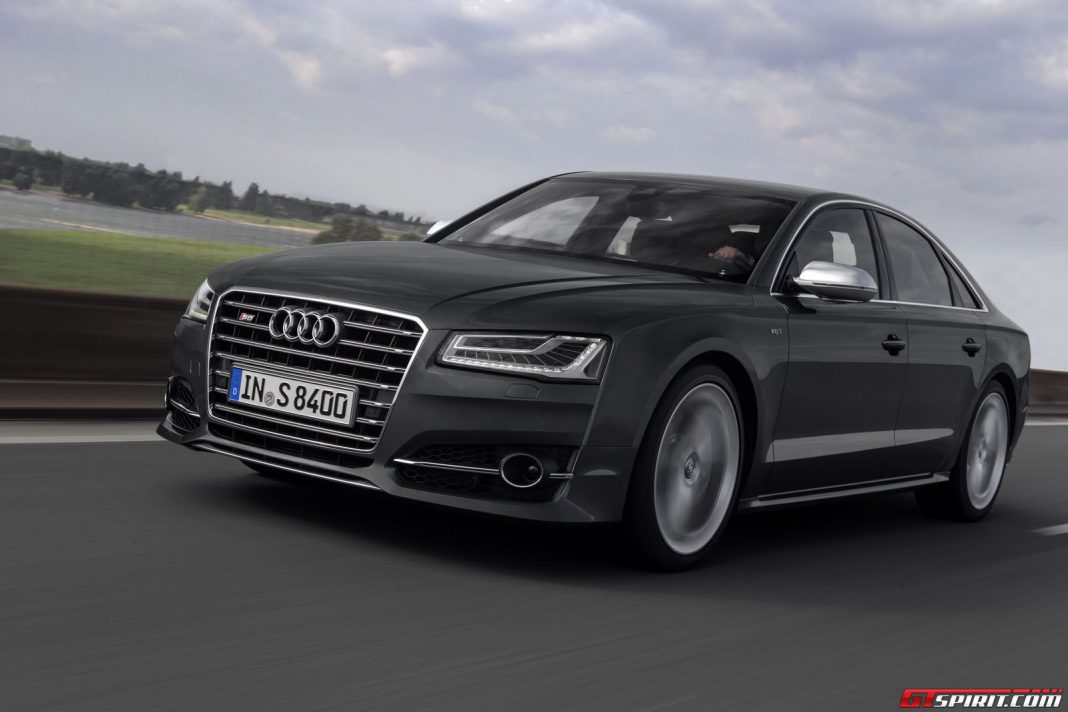
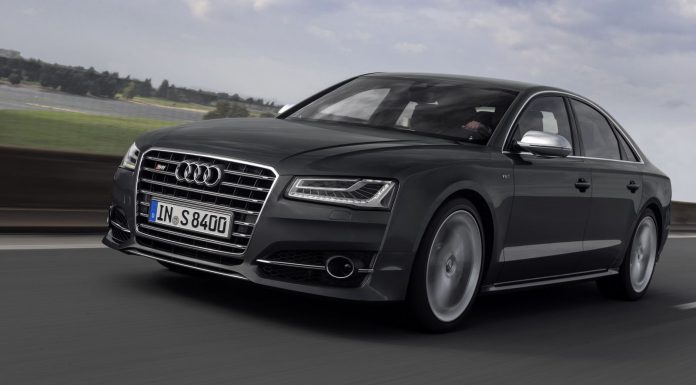
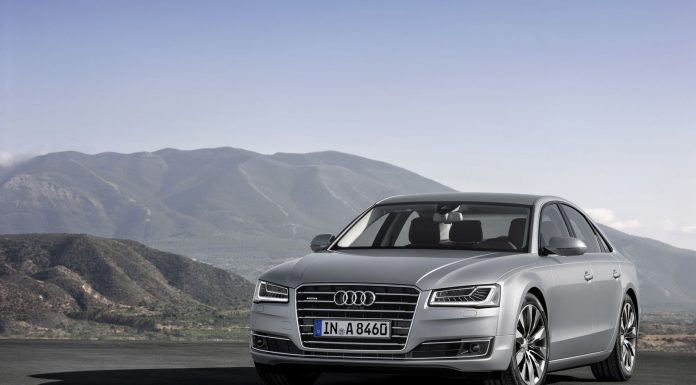




















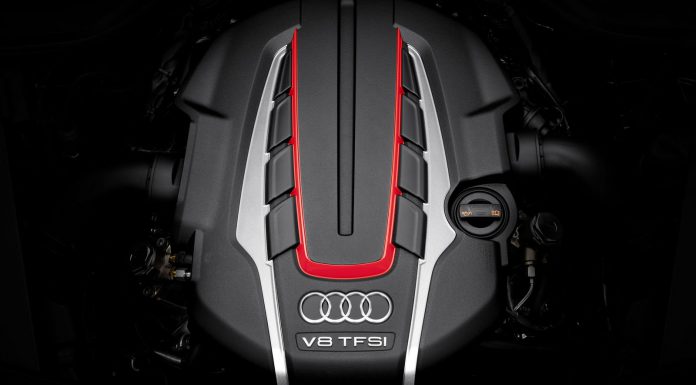











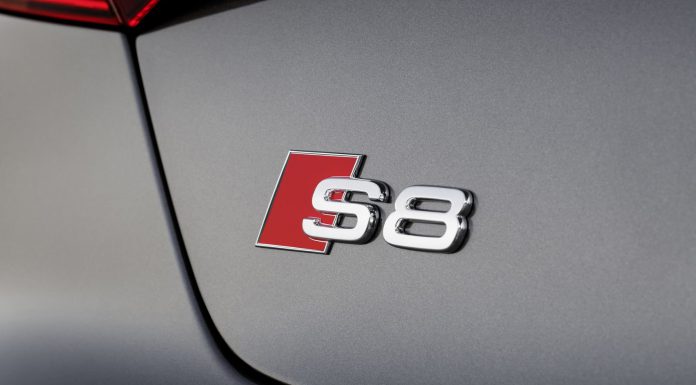
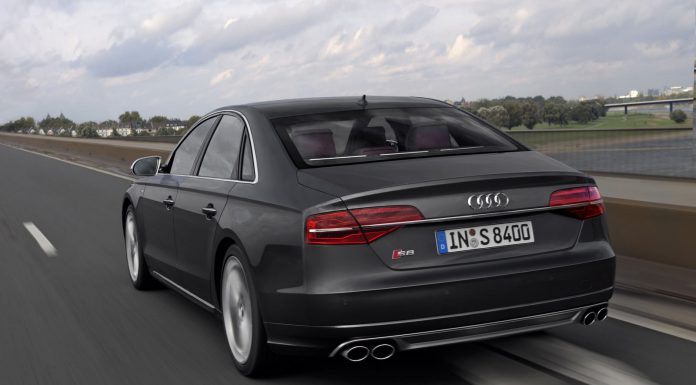















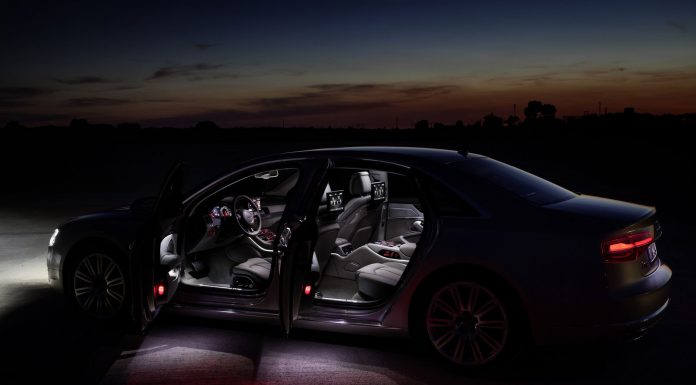
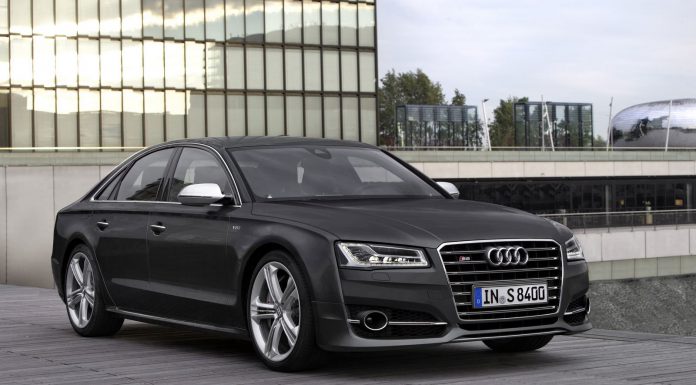
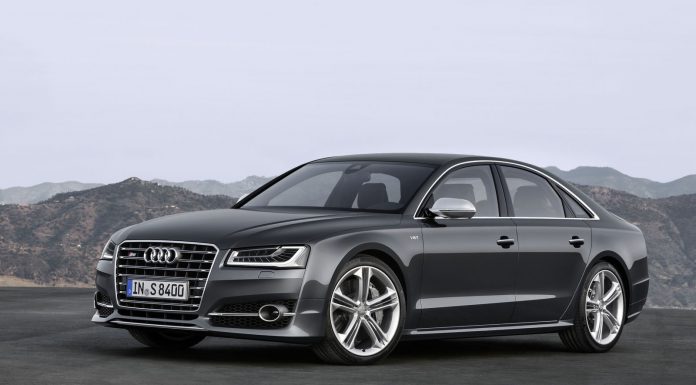











looks like audi did a great job :)